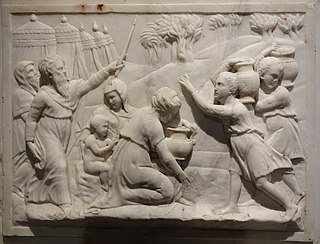Related Research Articles

Ticino, sometimes Tessin, officially the Republic and Canton of Ticino or less formally the Canton of Ticino, is one of the 26 cantons forming the Swiss Confederation. It is composed of eight districts and its capital city is Bellinzona. It is also traditionally divided into the Sopraceneri and the Sottoceneri, respectively north and south of Monte Ceneri.

Locarno is a southern Swiss town and municipality in the district Locarno, located on the northern shore of Lake Maggiore at its northeastern tip in the canton of Ticino at the southern foot of the Swiss Alps. It has a population of about 16,000 (proper), and about 56,000 for the agglomeration of the same name including Ascona besides other municipalities.

Switzerland lies at the crossroads of several major European cultures. Three of the continent's major languages, German, French and Italian, are national languages of Switzerland, along with Romansh, spoken by a small minority. Therefore, Swiss culture is characterized by diversity, which is reflected in a wide range of traditional customs. The 26 cantons also account for the large cultural diversity.

Lake Maggiore or Verbano is a large lake located on the south side of the Alps. It is the second largest lake in Italy and the largest in southern Switzerland. The lake and its shoreline are divided between the Italian regions of Piedmont and Lombardy and the Swiss canton of Ticino. Located halfway between Lake Orta and Lake Lugano, Lake Maggiore extends for about 64 kilometres between Locarno and Arona.

Arogno is a municipality in the district of Lugano in the canton of Ticino, located south of Lake Lugano in the southernmost tip of Switzerland.

Brissago is a municipality in the district of Locarno in the canton of Ticino in Switzerland, bordering Italy. Brissago lies on the western shore of Lake Maggiore and includes the Brissago Islands.

Domenico Gagini was a Swiss-Italian sculptor who was active in Northern as well as Southern Italy.

Pier Francesco Mola, called Il Ticinese was an Italian painter of the High Baroque, mainly active around Rome.

Carpoforo Tencalla was an influential Swiss-Italian Baroque painter of canvases and frescoes. He is little studied and has come only recently to the attention of art critics and historians. He introduced 17th-century Italian painting style with its mythological subjects to Central Europe, reviving the art of fresco on large surfaces.

Giuseppe Antonio Petrini was a painter of the late-Baroque, active mainly in Lugano, present-day Switzerland.

The Brissago Islands are a group of two islands located in the Swiss part of Lake Maggiore close to Ronco sopra Ascona and Brissago. Both islands belong to the district of Locarno, in the canton of Ticino.

Taddeo Carlone was a Swiss-Italian sculptor and architect.
Claudio Baccalà (1923–2007) was a Swiss painter from Ticino. Employed as a farmer and shepherd, Baccalà was never formally trained as an artist, but spent 60 years painting in the atelier next to his house in Brissago. He frequently travelled, displaying his work in Basel and Zurich, and formed a friendship with Jean Dubuffet.

Luca Antonio Colomba (1674–1737) was a Swiss Baroque painter born at Arogno. His style was distinguished for its happy compositions and its careful design, as also for the delicate and tender colours. He painted in oil and fresco.

Diego Francesco Carlone was an Italian sculptor.

Giuseppe Antonio Felice Orelli, also referred to as Giovanni Antonio, was a Swiss-Italian painter, mainly of sacred subjects, active in a late baroque style.
The architecture of Switzerland was influenced by its location astride major trade routes, along with diverse architectural traditions of the four national languages. Romans and later Italians brought their monumental and vernacular architecture north over the Alps, meeting the Germanic and German styles coming south and French influences coming east. Additionally, Swiss mercenary service brought architectural elements from other lands back to Switzerland. All the major styles including ancient Roman, Romanesque, Gothic, Renaissance, Baroque, Neoclassical, Art Nouveau, Modern architecture and Post Modern are well represented throughout the country. The founding of the Congrès International d'Architecture Moderne in La Sarraz and the work of Swiss-born modern architects such as Le Corbusier helped spread Modern architecture throughout the world.
Carlo Giuseppe Plura was a Swiss-Italian stucco artist and sculptor. He was born in Lugano and died in Borgo San Dalmazzo. Like him, his son Giuseppe Antonio Plura the Elder and Giuseppe Plura the Younger were both sculptors and both active in the United Kingdom.
Giovanni Pietro Magni, aka Pietro Magno was a German stuccoist born in Switzerland. He decorated many buildings across central Germany in the late 1600s and early 1700s, particularly under the patronage of the Prince-Bishop of Würzburg.

Max James Emden was a German-born Swiss businessman, art collector, heir and bon vivant. He is most notably known for being the owner of the Brissago Islands on Lake Maggiore since 1926.
References
- ↑ Giovanni Antonio Caldelli by Elfi Rüsch, Dictionnaire historique de la Suisse (DHS), 3 April 2003.
- ↑ Dizionario storico raggionato degli uomini illustri del canton Ticino, by Gian Alfonso Oldelli, (1807), page 50.